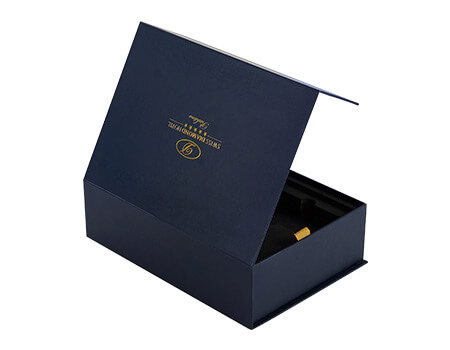Rigid packaging boxes have become a major player in the packaging industry because of their numerous advantages that cut across various sectors. This article examines the significance, benefits, and applications of rigid packing boxes in addition to upcoming changes that may affect them.
What Are Rigid Packaging Boxes?
Rigid packing boxes are sturdy containers made of materials that are thick, such cardboard or paperboard. These boxes have excellent structural integrity and keep their shape better than flexible packaging, which makes them great for preserving breakable objects both in transportation and storage.
Types of Rigid Packaging
Rigid packaging comes in various forms, including:
Folding Boxes
Often used for retail products, these boxes can be flat-packed and easily assembled.
Set-Up Boxes
Pre-formed boxes that don’t collapse, ideal for high-end products.
Containers and Tubes
Commonly used for cosmetics and food items, these provide a unique presentation.
Benefits of Rigid Packaging Boxes
Superior Protection
One of the key advantages of rigid packaging is its ability to protect contents from external effects. There are fewer returns and happier customers since goods are shielded from harm during delivery by the strength and thickness of the materials.
Enhanced Brand Image
Sturdy packaging gives the goods a more upscale appearance and impression. Superior packaging has the power to sway customer decisions, increasing sales. To leave a lasting impression, brands frequently invest in visually appealing designs and finishes like foil stamping or embossing.
Sustainability
The need for sustainability is fueling innovation in rigid packaging. Recycled materials and recyclable cartons are becoming more and more popular among producers hoping to attract eco-conscious clients. Another advantage of rigid packaging is its reusable design, which reduces waste.
Customization Options
It is simple to modify rigid packaging boxes to meet different product dimensions and branding specifications. Packaging solutions that are distinctive and visually appealing may be achieved by companies by customizing the design, color, and print to correspond with their brand identity.
Applications Across Industries
Cosmetics and Personal Care
The cosmetics industry commonly uses rigid packaging to present products in an elegant way. Premium boxes may be utilized as a blank canvas for intricate designs that appeal to the target market in addition to keeping items safe.
Food and Beverage
In the food business, rigid packaging is crucial for maintaining safety and freshness. Businesses use these boxes to package drinks, snacks, and gourmet foods so they appear attractive on the shelf and remain intact throughout shipping.
Electronics
Delicate electrical goods, such as cellphones and gadgets, are protected to the necessary extent by rigid packaging. These boxes usually have extra cushioning and inserts to secure the items and lessen the chance of damage.
Pharmaceuticals
Safety and conformance are of utmost importance in the pharmaceutical sector. Sturdy packaging ensures that branding and labeling adhere to stringent regulatory requirements while protecting delicate pharmaceuticals.
Trends Influencing Rigid Packaging
Technological Advancements
One of the innovations brought about by the use of technology in packaging is smart packaging. By incorporating NFC and QR codes into hard packaging, brands can now connect with consumers through interactive experiences.
E-commerce Growth
Reliability in packing solutions is in high demand as internet buying keeps growing. Since rigid packing ensures that items get at customers’ doorsteps securely, it is becoming more and more popular for e-commerce.
Minimalism and Simplicity
A lot of firms are moving toward package designs that are simple and functional. This trend is a reflection of customer desires for uncluttered looks that don’t sacrifice the benefits that hard packaging provides.
Regulatory Changes
The sector is being shaped by modifications to safety requirements and packaging material laws. Businesses will need to invest more in rigid packaging solutions that meet the new regulations as a result of having to adjust to these changes.
Challenges in Rigid Packaging
Cost Considerations
Even while hard packaging has several advantages over flexible packaging, it might nevertheless be more costly. Businesses need to carefully balance the expenses with the possibility of improved product protection and brand impression.
Material Sourcing
Obtaining premium materials for rigid packaging can be difficult, particularly in light of the growing emphasis on sustainability. It is imperative for manufacturers to guarantee that they are satisfying customer needs and regulatory obligations by sourcing materials ethically.
Design Limitations
developing hard packaging might be more difficult than developing flexible options, despite the fact that personalization is a big benefit. It takes time and money for businesses to produce designs that are both aesthetically pleasing and useful.
The Future of Rigid Packaging
Sustainable Innovations
Eco-friendly packaging materials and procedures will probably be the main emphasis of rigid packaging in the future as consumer awareness of sustainability grows. It is anticipated that developments in compostable and biodegradable materials would influence the industry.
Increased Automation
Automation is being used in the packaging sector to increase productivity and cut expenses. Rigid packaging automated production lines will simplify the manufacturing process and enable businesses to fulfill demand without sacrificing quality.
Collaborative Solutions
There will be an increase in the cooperation of brands, merchants, and package producers. Stakeholders may collaborate to create creative packaging solutions that fulfill consumer expectations and specifically solve industry concerns.
Conclusion
Rigid packaging boxes are essential in today’s packaging industry because they offer superior protection, greater branding possibilities, and adaptability for various uses. Innovations in technology and the industry’s increasing focus on sustainability will influence future advances in rigid packaging. Companies that adjust to these changes will be better able to meet the demands of their clients and thrive in an increasingly cutthroat market.
















